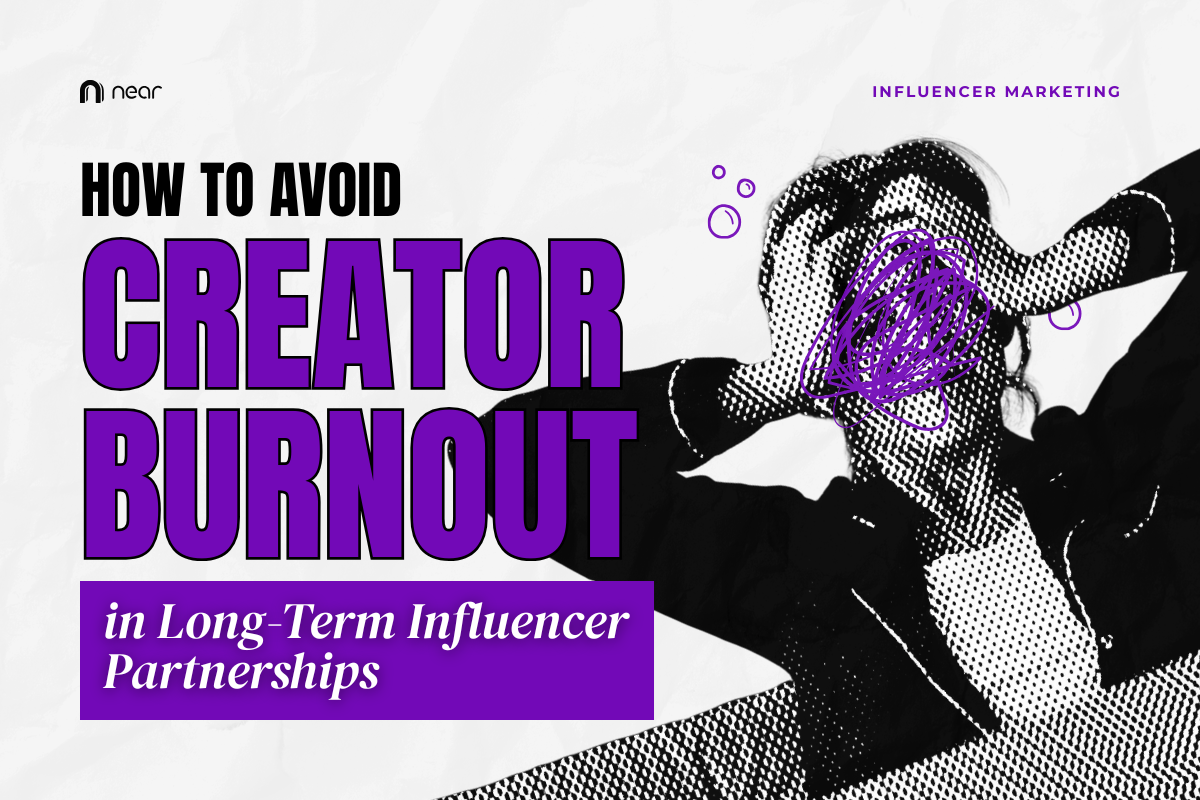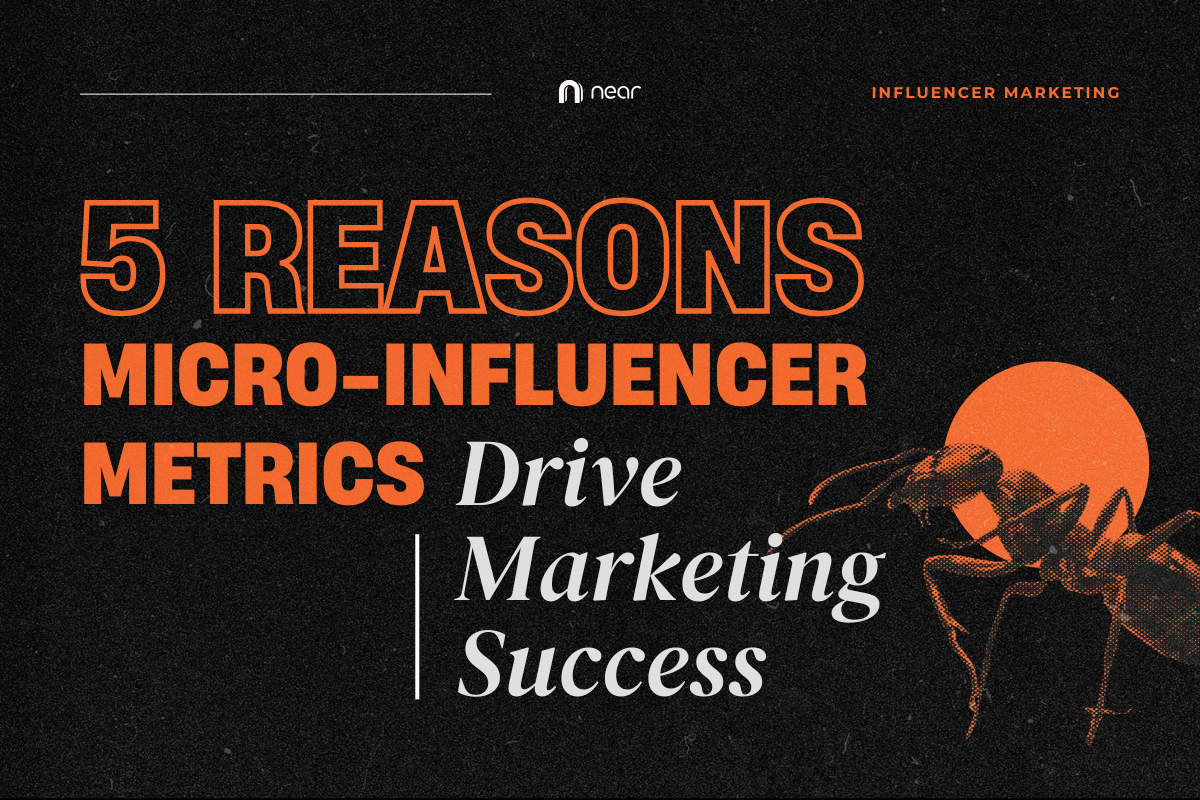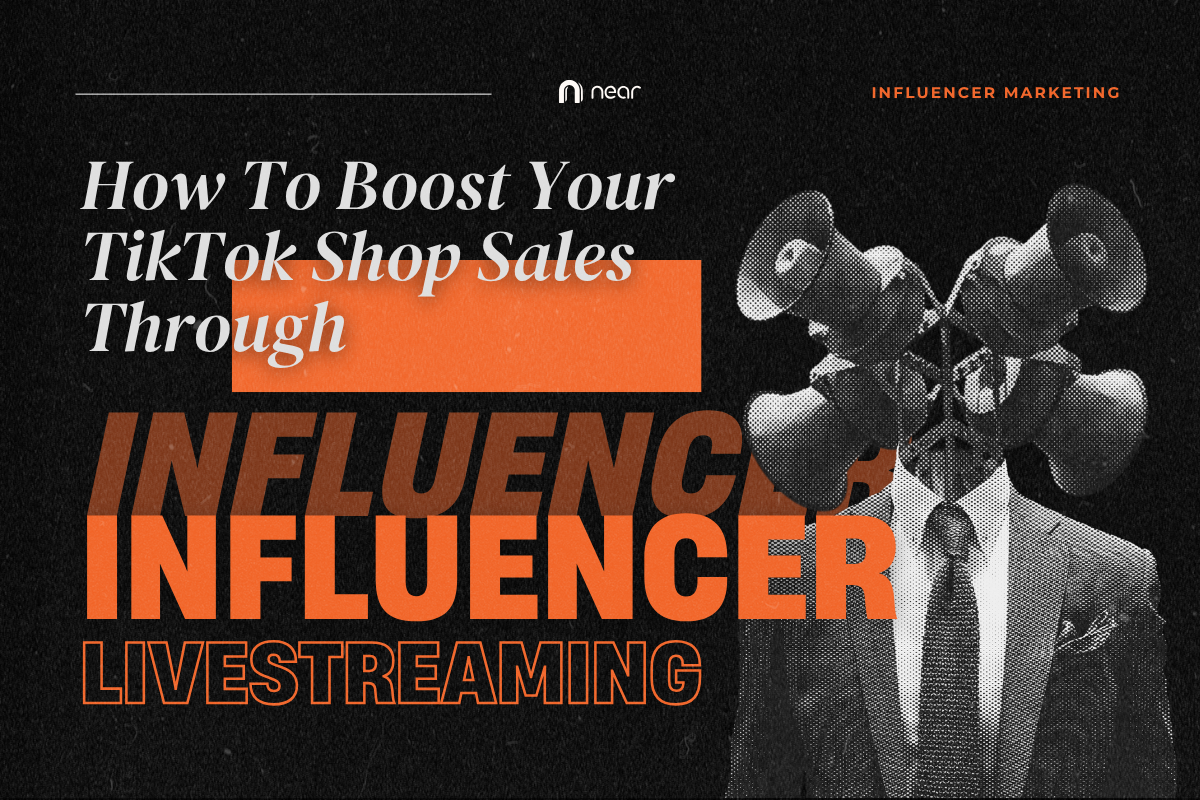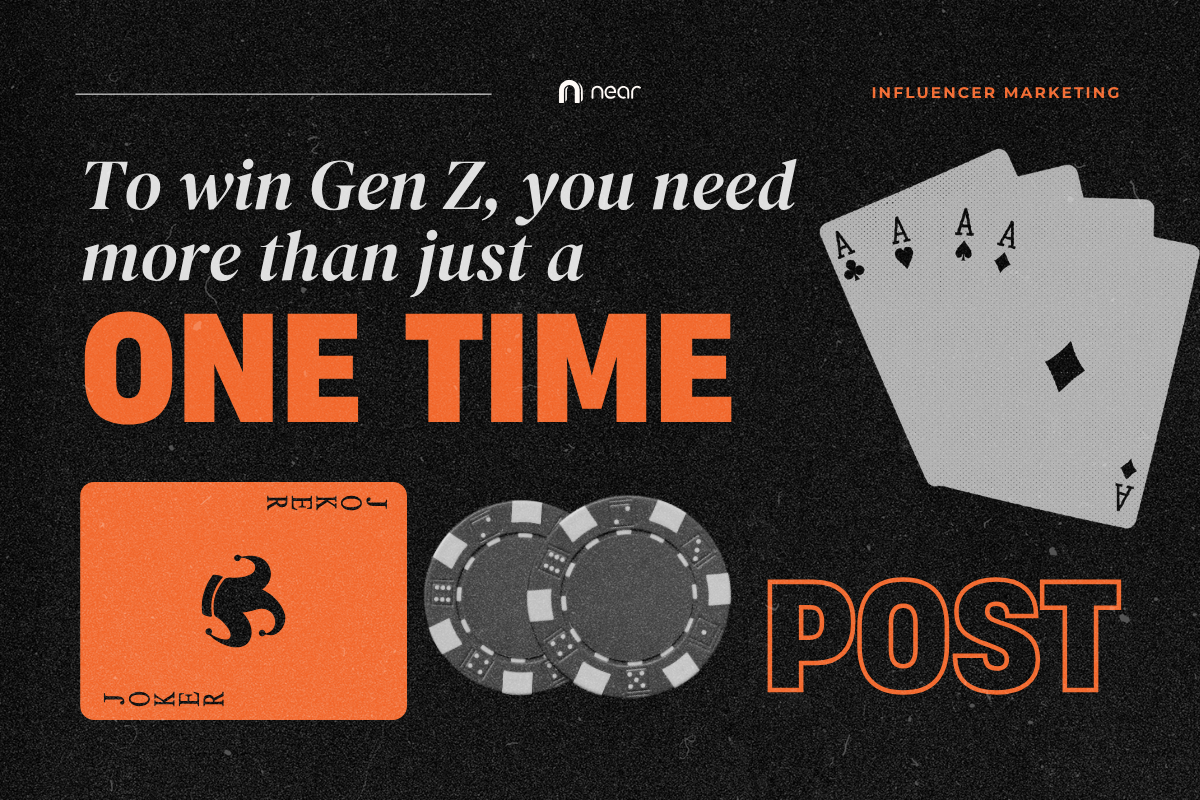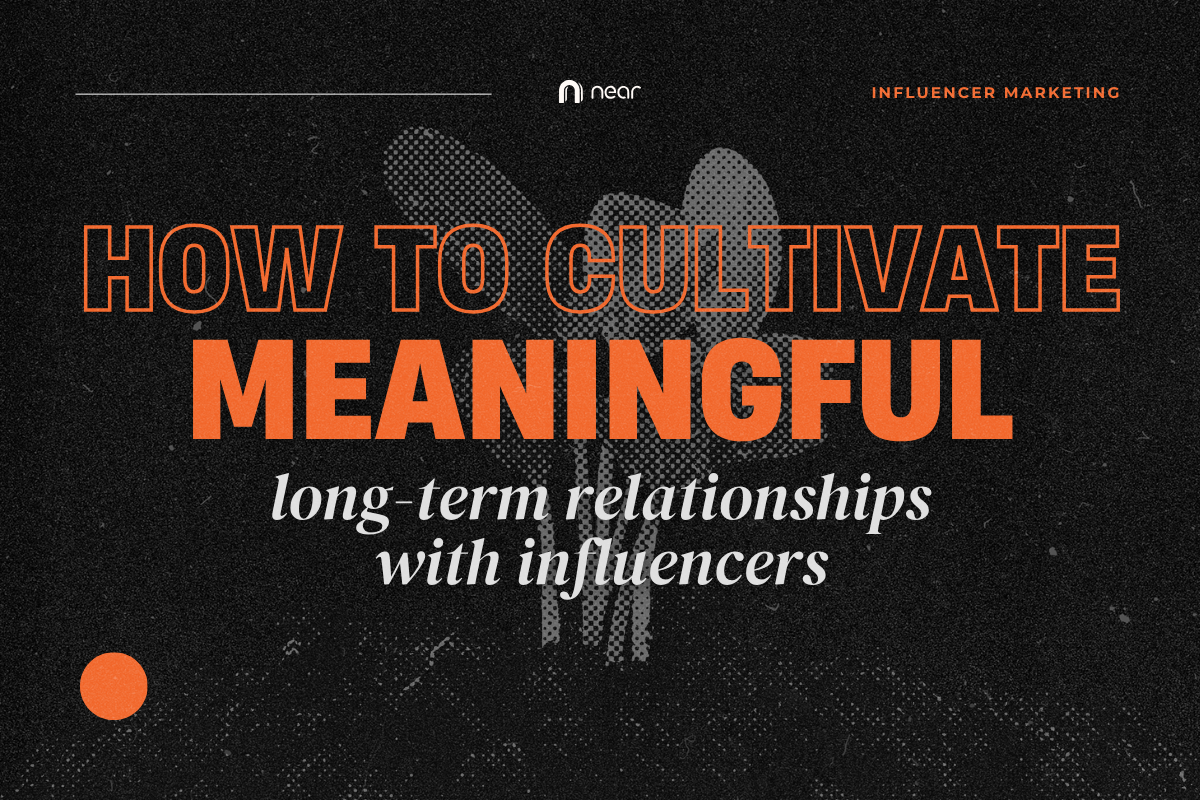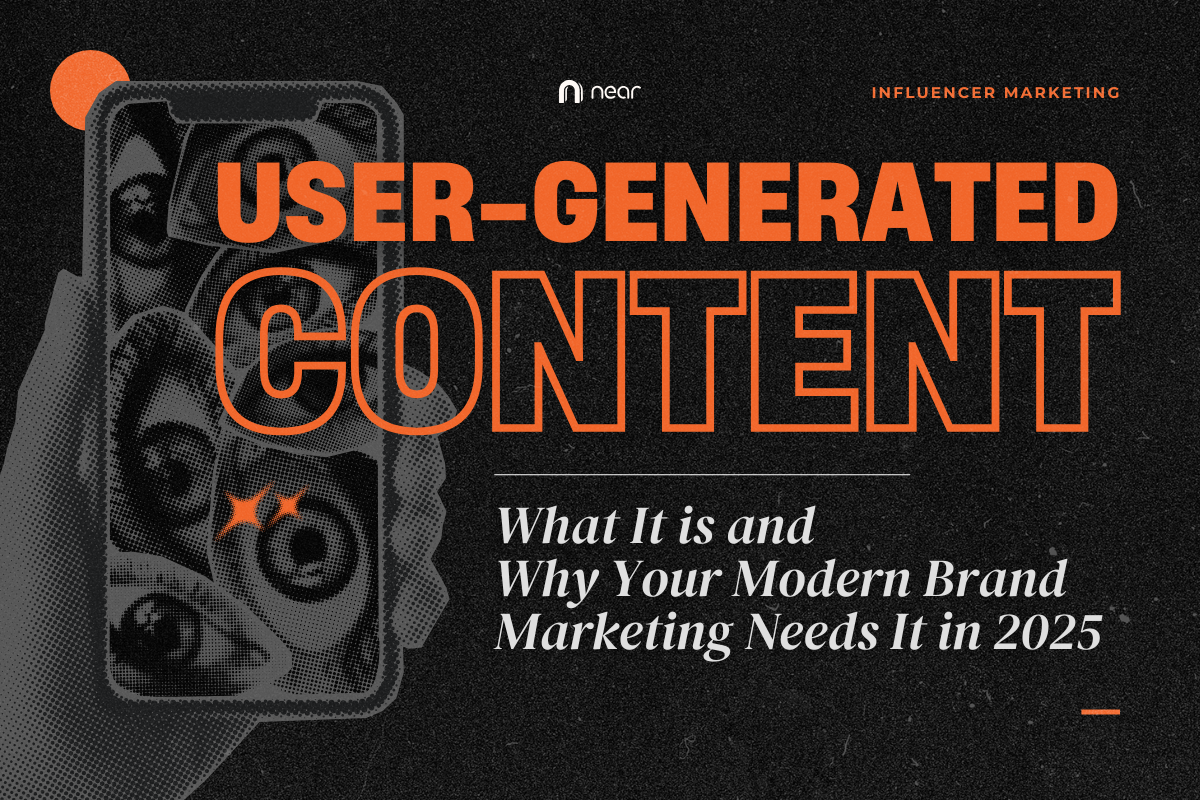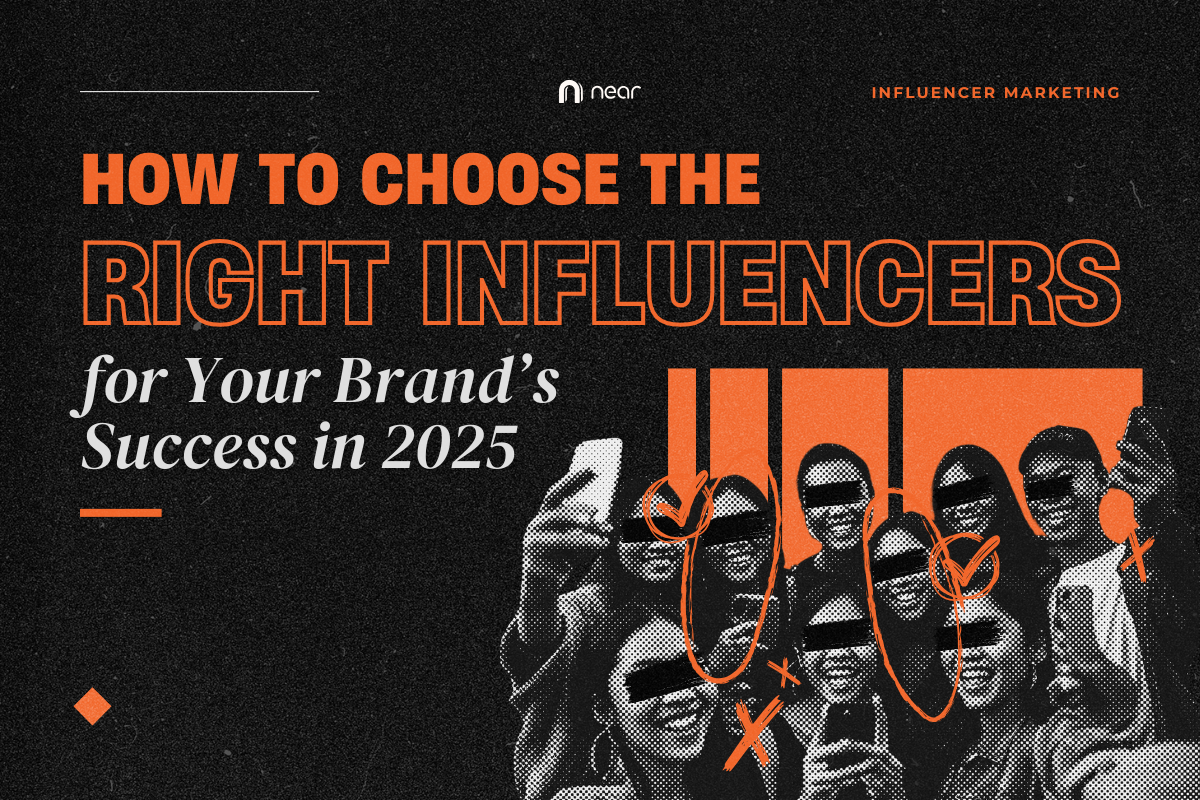View By Date
- December 2025 1
- November 2025 2
- October 2025 3
- September 2025 2
- August 2025 2
- July 2025 2
- June 2025 2
- May 2025 3
- April 2025 2
- March 2025 3
- February 2025 1
- January 2025 1
- November 2024 1
- September 2024 1
- July 2024 1
- May 2024 3
- April 2024 1
- March 2024 1
- February 2024 2
- January 2024 2
- August 2023 1
- July 2023 1
- June 2023 2
- May 2023 3
- April 2023 4
- January 2023 2
- November 2022 1
- September 2022 3
- June 2022 1
- December 2021 1
- November 2021 4
- October 2021 2
- September 2021 1
- January 2021 1
View By Category
How to Avoid “Creator Burnout” in Long-Term Influencer Partnerships
How to Avoid “Creator Burnout” in Long-Term Influencer Partnerships
Creator burnout hurts creators first, but brands feel it next. More than half of creators, according to Averi Academy, report feeling burnt out, with many considering leaving content creation altogether due to financial instability, algorithm pressure, and constant demands for “always-on” content.
If you’re running ambassador programs or long-term influencer partnerships, preventing creator burnout isn’t just a nice-to-have, but a sustainability strategy. In our work with always-on campaigns, the partnerships that last (and perform) are the ones where creators are treated as collaborators, not content machines.
Here’s how brands can build sustainable, long-term creator relationships without burning them out.
1. Build Sustainable Foundations.
Many creators are juggling multiple brand deals, their own channels, admin work, and a personal life. It’s no surprise that demanding workloads and constant content expectations are key burnout drivers.
Instead of defaulting to “more content, more often,” start by designing sustainable scopes:
Align on realistic goals and cadence. In your first briefing call, agree on what “good” looks like and how many posts or lives per month you really need to get there. Long-term partnerships work better when they feel achievable, not like a treadmill.
Plan in seasons, not chaos. Map out themes by month or quarter so creators aren’t forced to improvise under pressure every week. For example: Month 1 – launch and awareness, Month 2 – education and tutorials, Month 3 – reviews and social proof, Month 4 – promos and community moments.
Bake in breathing room. Build lighter months or off-weeks into retainer or ambassador contracts, especially after big campaign pushes. That pause gives creators space to recharge, often leading to fresher ideas, sharper content, and better performance long term.
Guides like inBeat’s breakdown of influencer briefs highlight how clear goals, structured timelines, and realistic deliverables reduce back-and-forth and help creators plan around their actual capacity.
2. Treat Creators Like Humans.
Burnout isn’t only about workload: it’s also about how creators feel in the relationship. Studies show burnout is tied to poorly managed chronic stress, pressure to perform, and feeling undervalued.
If you’re running ambassador programs or always-on partnerships, you need human-first systems:
Set up regular check-ins. Not just to review metrics, but to ask, “How are you? What feels heavy right now? What would make this partnership easier?” A quick 15–20 minute call once a month is usually enough to catch small issues early before they snowball.
Create a safe feedback loop. Make it clear they can say, “This format doesn’t work for my audience,” or “This timeline is too tight” without fearing they’ll be dropped from the roster. You can signal this by literally including a line in the brief or kickoff call like, “If anything here feels off, tell us and we’ll adjust together.”
Be flexible with life changes. Illness, personal events, and algorithm drops happen. Have backup plans and a culture of grace instead of panic. A bit of flexibility in a tough week often leads to better content, stronger loyalty, and a creator who’s more invested in doing great work for your brand long term.
Mental health and burnout pieces in the creator space emphasize the impact of realistic expectations and social support—both from peers and from partners. If your brand is part of that support system, creators are far more likely to stay, grow, and give you their best work over time.
3. Protect Creative Freedom (That’s What You’re Paying For!)
One of the fastest ways to burn out a creator? Treat them like a production house executing your script.
Strong briefs matter but they should guide them and not suffocate. Platforms like Storyclash and Social Native stress that effective influencer briefs balance clear direction with creative freedom, because creators know their audience, platform, and format best.
In practice, that looks like:
Tight strategy, loose creative. Provide the non-negotiables: key messages, claims that must be accurate, must-have CTAs, and compliance guidelines. Then let creators own the hook, story, style, and format because that’s how audiences respond better.
Platform-native content, not resized ads. A TikTok POV rant, a GRWM, or a “day in the life” vlog won’t look like your brand TVC and that’s the point. Reference Near’s own approach in How to Leverage Instagram, TikTok, YouTube, and LinkedIn for Influencer Campaigns: content needs to feel native to where it’s posted because audiences can tell instantly.
Invite their ideas. Ask, “What type of content usually performs best for you when it comes to this topic?” Creators usually know trends better and earlier than brands so you’ll often get smarter angles than what’s in your deck.
Creators are less likely to burn out when they’re allowed to create in ways that feel true to their voice rather than constantly forcing themselves into brand-first formats that don’t fit.
4. Design Partnerships Around Long-Term Growth, Not One-Off Extraction
Burnout gets worse when creators feel like they’re on a hamster wheel of short-term deals, with no stability or long-term upside. That’s where your ambassador programs and always-on partnerships can become an advantage. Best-practice guides on long-term influencer partnerships emphasize things like clear contracts, evolving roles, and ongoing performance reviews to keep the relationship fresh and fair.
A few ways to design for sustainability:
Shift from one-off to retainer or multi-month contracts. Reliable income reduces financial stress and gives creators mental space to focus on quality instead of scrambling for the next deal.
Evolve the partnership. As the relationship matures, invite creators into deeper roles: product input, co-created drops, monthly product Q&As, or being the face of a recurring content series.
Use data to refine output. Review what’s working (formats, hooks, topics) and adjust together. When creators see a path to growth with your brand, they’re more invested and less drained.
5. Pay Fairly and Support the Creator
A huge driver of creator burnout is financial instability, especially when income can swing dramatically based on algorithm shifts or seasonal budgets. Brands can’t fix the entire economy, but you can contribute to healthier conditions:
Pay on time and pay fairly. If you expect exclusive rights, tight timelines, or heavy revisions, your compensation should match that. Be clear upfront about usage and exclusivity (where, how long, and in what formats you’ll use their content) and price accordingly.
Offer value beyond fees. Give early product access, performance bonuses, and invites to brand events or brainstorms so creators feel like true partners.
Be mindful of “scope creep.” Extra rounds of revisions, unplanned formats, or added asks (“Can you just also post this to Stories?”) add invisible workload. If you need more, renegotiate and don’t assume.
When brands treat creator well-being as part of campaign strategy, they get more consistent output, more authentic storytelling, and longer-lasting partnerships that actually perform.
Key Takeaway: Make Long-Term Partnerships Sustainable, Not Draining
“Always on” shouldn’t mean “always burnt out” for creators. If you’re building ambassador programs or long-term partnerships, think of yourself as designing a healthy workplace for creators.
Here are three actionable ways to start:
Design for sustainability, not just volume.Set realistic deliverable cadences, give creators visibility on campaign “seasons,” and build in lighter periods after big pushes. Predictable, humane timelines = better ideas and execution.
Protect creative freedom and human connection.Use briefs to clarify the non-negotiables: must-have claims, key messages, and guardrails, but let creators own the story, tone, and format. Pair this with regular check-ins so they can safely share what’s working (and what isn’t).
Invest in the relationship, not just the content.Pay fairly and on time, shift toward longer-term contracts where possible, and offer value beyond fees: early access, co-creation opportunities, and recognition. Creators who feel supported as people are far less likely to burn out and more likely to grow with your brand.
Long-term influencer partnerships start with brands who are willing to slow down just enough to build systems that protect creators’ time, energy, and creativity.
Want to build campaigns that are both high-performing and human? Download Near’s Trends Guide to turn those insights into healthier, more sustainable influencer campaigns.
5 Reasons Micro-Influencer Metrics Drive Marketing Success
5 Reasons Micro-Influencer Metrics Drive Marketing Success
When it comes to influencer marketing, bigger isn’t always better. Yup! While macro-influencers may dominate headlines, micro-influencers are quietly redefining smarter marketing with their highly engaged audiences, niche expertise, and authentic connections.
For us at Near, we believe that brands that focus on smaller, more strategic creators are seeing stronger ROI and cleaner data pipelines than ever before. So why exactly are micro-influencer metrics such a goldmine?
1. Authenticity That Builds Trust (and Drives Action)
Micro-influencers often come across as more relatable and trustworthy because they feel like peers within their niche communities. This peer-to-peer perception leads to stronger purchase intent and brand affinity: two metrics that are increasingly hard to achieve with polished celebrity ads. As we noted in ourWebinar Recap, success isn’t about follower size but aligning with creators whose voice and audience fit your brand. TheTrust Insights 2025 Trends Report backs this up, showing micro-influencers’ authentic connections lead to higher engagement and conversions.
2. Higher Engagement Rates = Better Metrics
Data doesn’t lie: micro-influencers with 10k–50k followers see average engagement rates of 3.86%, compared to just 1.21% for accounts over 1 million. Sponsored content often performs even higher, with 8–12% engagement on posts, according to recent analysis.
This “sweet spot” in audience size allows brands to collect more meaningful engagement metrics through comments, shares, and story completions that reflect real interest. A targeted skincare campaign, for instance, will benefit more from a micro-influencer with consistent 60–80% response rates than a macro-influencer’s broad, less interactive following.
3. Targeted Audiences for Smarter Segmentation
Micro-influencers specialize in niches from sustainable beauty to mental health advocacy, allowing brands to reach audiences aligned with their values. Instead of casting a wide (and expensive) net, brands can use micro-influencers’ audience data (demographics, interests, engagement patterns) to refine their targeting strategy.
This level of insight helps marketers identify not just who to reach, but how to speak to them. As highlighted in our previous blog,audience alignment is critical for driving smarter, more relevant campaigns. TheHubSpot 2025 Digital Marketing Report found micro-influencers (10–100k followers) are the most successful segment for influencer marketing campaigns, outperforming macro- and nano-influencers in engagement and conversion.
4. Cost-Effective Campaigns with Higher ROI
Working with micro-influencers is also kinder on the budget. For the cost of one macro-influencer post, brands can collaborate with multiple micro-influencers and generate a broader, more engaged reach.
A ROI study even found that campaigns with micro-influencers deliver up to 60% higher ROI compared to those led by macros or traditional ads. This is because their highly active communities respond better to calls-to-action and often convert at 60% higher rates.
5. Actionable Metrics That Power Smarter Marketing
To measure success, brands should go beyond vanity metrics like follower counts. The real goldmine lies in tracking KPIs that reflect actual influence and drive results:
Engagement Rate – High likes, comments, shares, and saves show the micro-influencer’s audience is not just watching but actively interacting. Micro-influencers often achieve engagement rates of 4–6% on regular posts and up to 12% on sponsored content, signaling stronger community trust.
Click-Through Rate (CTR) – CTR measures how many people are motivated to learn more after seeing a post. Unique links or promo codes can reveal how effectively an influencer inspires action, a key insight for refining future campaigns.
Conversion Rate – The ultimate proof of influence: how many people actually bought, signed up, or completed a desired action because of a campaign. This helps brands pinpoint which creators truly drive ROI, not just creating buzz.
Cost Per Acquisition (CPA) and ROI – Tracking CPA helps brands evaluate efficiency. Are they acquiring customers at a sustainable cost? Paired with overall ROI, this metric ensures marketing spend is delivering value.
Pro-tip: Use dedicated landing pages, hashtag tracking, and influencer-specific promo codes to collect cleaner first-party data. These methods not only make tracking more precise but also give brands metrics to allocate budgets to the most impactful creators and formats.
When brands track these KPIs consistently, they unlock micro-influencer metrics that go beyond surface-level performance. This data becomes a roadmap for smarter marketing decisions—who to work with, how to engage their audience, and how to scale campaigns effectively.
The Big Why: Micro-Influencers = Smarter Marketing
They deliver authenticity that builds trust – Micro-influencers’ close-knit communities view their endorsements as genuine, leading to stronger purchase intent and higher conversion rates.
They provide richer, more actionable data – From engagement metrics to audience demographics, micro-influencer campaigns give brands metrics they can use to refine targeting and messaging.
They drive smarter, more cost-effective marketing – With higher ROI, lower costs, and better alignment to niche audiences, micro-influencers are helping brands build campaigns that resonate and convert.
If you want to build smarter campaigns that turn metrics into ROI, you can learn more by downloading Near’s Influencer Trends Guide here.
How To Boost Your TikTok Shop Sales Through Influencer Livestreaming
How To Boost Your TikTok Shop Sales Through Influencer Livestreaming
What’s turning casual scrollers into instant shoppers? It’s not just TikTok dances or trending sounds: it’s influencer livestreams. These real-time events are becoming a must-have strategy for brands looking to boost sales, build trust, and stand out in an oversaturated social commerce space.
At Near, we’ve seen how TikTok Shop livestreams can transform a viewer’s curiosity into checkout clicks. Our thoughts? When you tap an influencer for a live, you’re not just hiring a host, you’re inviting a distinct personality and their dedicated audience to care about your brand.
But what makes influencer livestreaming so effective? And how can brands overcome challenges like content fatigue or conversion gaps to harness its full potential? Let’s break it down.
1. Product Demos That Feel Real (and Sell Fast)
Influencer livestreams give viewers what static content can’t: real-time, unfiltered product experiences. Makeup tutorials showing how a lipstick lasts through coffee sips. Fashion hauls with live try-ons and styling tips. Even small businesses can spotlight products and answer customer questions on the spot.
According to a study in MDPI, livestreamers who spark genuine emotions create stronger purchase intent. It’s proof that connection is what drives conversions.
2. Trust That Converts Viewers into Buyers
On TikTok, influencers feel like trusted friends, not faceless ads. TikTok influencers have a staggering 26% engagement rate, making their live recommendations even more impactful.
We’ve seen beauty brands host “get ready with me” lives where creators chat about products while casually applying them while viewers ask questions, share emojis, and often buy mid-stream. It’s authentic, interactive, and highly effective.
And as our TikTok Growth Tips blog explains, Gen Z especially loves brands that feel like part of their daily lives—not just another sales pitch.
3. Seamless Shopping
Thanks to TikTok Shop, buying during livestreams is frictionless—viewers can tap product tags mid-video and check out without ever leaving the app. This “see it, want it, buy it” flow is at the heart of social commerce, where content and commerce merge seamlessly.
As we shared in our TikTok Shop social commerce playbook, this trend is redefining how brands connect with consumers. E-commerce giants now use live selling to mirror flash sales, creating urgency with limited-time discounts and stock updates. This strategy doesn’t just move products; it builds community and keeps buyers coming back for more.
How to Make Most Out of Influencer Livestreams
Schedule Ahead & Promote Use TikTok’s Live Event Scheduler to set dates and promote via teaser posts. Consistently scheduling lives helps audiences anticipate and prioritize your events. A well-promoted live not only drives higher attendance but also increases chances of virality as TikTok’s algorithm favors upcoming events.
Use a Live Moderator Assign a moderator to manage comments, filter spam or negative messages, and highlight top questions. This allows the influencer to focus fully on engaging with the audience instead of getting distracted by technical hiccups. A smooth, well-managed live feels more professional and keeps viewers hooked longer.
Tap Micro-Influencers & UGC Partner with niche creators (5k–50k followers) and encourage user-generated clips for a more authentic vibe. Micro-influencers bring a loyal audience and often foster deeper connections during lives. Their relatability makes viewers feel like they’re hearing from a trusted friend rather than a brand rep.
Make It Interactive Integrate Q&As, polls, countdowns, and limited-time giveaways to invite participation. This keeps viewers invested and makes them more likely to stick around. The more engaged your audience feels, the more likely they’ll take action, whether that’s adding to cart, buying goods, or sharing your live.
Create Flash Offers Use live-only deals, stock countdowns, and exclusive bundles to trigger urgency and boost conversions. Highlighting limited availability creates FOMO, which can dramatically increase on-the-spot purchases. This tactic encourages impulse buying and rewards viewers for showing up in real-time.
Your Livestream Success Checklist
✔ Bridge Awareness and Conversion Show real-time product demos and answer audience questions to turn “just browsing” into instant purchases.
✔ Keep It Authentic Let influencers speak naturally and showcase products in unscripted ways—viewers trust personality-driven lives over polished ads.
✔ Make It Interactive Add Q&As, polls, and live giveaways to engage viewers and create a sense of community that keeps them coming back.
By embracing this format, your brand can deliver unfiltered demos, foster real-time connections, and turn watchers into loyal customers.
Level up your TikTok game today–book a TikTok Shop strategy session with Near and learn more about social media trends here.
To Win Gen Z, You Need More Than Just A One-Time Post
If you’re still running one-off influencer campaigns hoping to win over Gen Z, it’s time to rethink your strategy. For real.
Gen Z consumers are some of the most marketing-savvy, socially aware audiences we’ve ever seen. They scroll fast, spot fakes faster, and won’t hesitate to click away if something feels even slightly off. According to a McKinsey report, 70% of Gen Z say they try to purchase from brands they consider ethical, and they’re quick to hold brands accountable for performative or inauthentic behavior. So what’s the problem with single-shot influencer posts? Simple: Gen Z doesn’t just want a pitch, they want proof.
According to Later’s Gen Z consumer insights, 49% of Gen Z relies on influencers to discover new products, and 58% follow them for entertainment. But those influencers aren’t just selling, they’re seen as virtual friends, trendsetters, and trusted voices. In a generation built on connection, a one-time ad just won’t cut it.
Let’s break down why these short-term campaigns are falling flat and what marketers can do instead.
Why One-Off Campaigns Aren’t Effective
Lack of Consistency = Lack of Trust
Gen Z can smell a transactional endorsement a mile away. If they see an influencer promoting a product just once and never again, it raises questions. They need to see consistent usage and long-term engagement before they consider buying in.
Inauthenticity Feels Loud
Forced collabs? Scripted lines? Gen Z will scroll past. They want storytelling, not sales pitches. Influencers who post candid, unfiltered content about their real experiences are far more likely to spark interest and trust.
It’s About Community, Not Clout
A huge following isn’t enough–Gen Z prefers creators who have meaningful engagement with their audience: ones who answer DMs, start conversations, and act like people, not billboards. That’s why micro and mid-tier influencers often perform better than macro ones in this space.
Culture > Product
Product-first posts feel out of place in a generation that values shared experiences. Gen Z connects with brands that embed themselves in their lifestyle, values, and humor—not ones that interrupt it.
Enter: The Age of “Deinfluencing”
The rise of deinfluencing proves that Gen Z is increasingly critical of overconsumption. They reward brands that promote sustainability, transparency, and responsibility, not hype.
What Smart Marketers Do Instead
1. Build Real Relationships with the Right Influencers
Winning brands don’t just collaborate, they commit. Long-term partnerships with creators who align with your values allow for more natural, recurring content that feels real, not rehearsed. It’s what Gymshark does by working with fitness influencers who genuinely use their products, and it’s how Spotify turned their Wrapped KOL campaign into a cultural moment.
Start by partnering with influencers who already reflect your audience’s values and lifestyle. Then stick around. Gen Z needs to see consistency before they buy in.
2. Prioritize Authenticity
Forget polish—focus on personality. Gen Z craves storytelling that feels spontaneous, not staged. Let influencers speak in their own voice, share real experiences, and even show imperfections. That’s where trust builds.
And if your brand aligns with Gen Z’s bigger interests (like mental health, sustainability, humor, or activism), don’t just nod to it—embed it into the content. This kind of cultural fluency is key to standing out.
3. Focus on Engagement, Not Just Exposure
It’s not about how many followers they have, it’s about how many care. Partner with KOLs who are talking with their audience, not just talking at them. Prioritize those who start conversations, share comments, or co-create content with followers.
Gen Z also responds well to campaigns that invite participation. Think TikTok challenges, comment-led prompts, even gamified or AR experiences. Interactive campaigns create shared experiences—something one-time posts rarely do.
Key Takeaway
Gen Z isn’t buying into one-time influencer posts—they’re looking for proof, patterns, and people they can believe in. Winning their loyalty takes time, intention, and a strategy that puts real connection first. That means fewer quick hits, and more long-term partnerships rooted in trust, culture, and creativity.
Want to learn more on how to make marketing campaigns that actually resonate with Gen Zs? Download Near’s Social Media Trends Guide here.
How to Cultivate Meaningful Long-Term Relationships with Influencers
Building long-term influencer relationships is one of the smartest moves a brand can make in 2025.
Because today, influencer marketing must be more than aesthetics or perfectly timed posts. It’s also about the relationships behind the content—the real, meaningful connections between brands and the creators who bring their stories to life.
KOLs (key opinion leaders) don’t just promote products. They shape conversations, shift culture, and define your brand. That’s why the best influencer strategies today focus on shared values and consistency. Whether you’re working with micro-influencers or household names, the key is to cultivate partnerships that grow over time and actually mean something.
Why Long Term Matters
We’ve all seen it: BTS and Louis Vuitton, Roger Federer and Uniqlo, Serena Williams and Nike. They show how long-term partnerships can shape brand identity, deepen audience connection, and unlock bigger, more creative collaborations over time.
According toTraackr, an influencer marketing software company, long-term partnerships deliver better ROI as influencers better understand your brand. Their content feels more genuine, more informed, and more trusted by their audience.
Yes, short-term influencer campaigns might bring short-term buzz. But lasting brand impact is usually a result of a lasting relationship.
When you partner with an influencer for a one-off collab, that’s totally normal! It happens all the time. But what happens after that post matters. That first project is the spark and you have to nurture the relationship. Why? Familiarity breeds trust and opens the door to better work. And if that first collab went well? That’s your green light to go bigger next time.
Here’s the thing. If you’ve worked with a KOL before, whether as a brand or an agency, you already have something money can’t buy: familiarity.
They know how you work.
You know how they communicate.
And that kind of trust? It speeds up production, reduces back-and-forth, and leads to better-performing content. Familiarity often translates into smoother workflows, more aligned content, and higher engagement because you’re not just briefing a stranger. You’re building with someone who already gets it.
It’s way easier to co-create something meaningful when both sides already get each other. No awkward intros or over-explaining. You both build on trust and content that clicks.
And what does this mean for your customers?
They see consistency, which builds trust.
They get to know your brand over time, not just in a one-off post.
Your product becomes tied to someone they already trust.
That familiarity leads to better brand recall, stronger emotional connection, and more confident buying decisions. Because when an influencer genuinely sticks around, the customer does too.
If your goal is loyalty and trust, long-term relationships are the foundation.
Make Influencers Want to Stay
Relationships go both ways. Think of it as dating—no one wants to feel used, rushed, or ghosted, right? Influencers are more likely to stay when they feel seen, supported, and creatively fulfilled.
Sustainable influencer partnerships rely on transparency, mutual respect, and trust. Creators aren’t just content machines, treat them like partners.
Here are a few ways to make that happen:
Alignment matters from the start. Start by choosing an influencer who naturally fits your brand. look at their tone, content style, values, and audience. If they’re already a user, even better! No hard selling needed, just real advocacy. When their voice and your values align, the content feels seamless and hits harder.
Collaborate, don’t dictate. Influencers thrive when they’re trusted to tell the story their way. Share clear guidelines, then let them translate your message in a voice their audience already connects with. It’s about guided direction, not control.
Show up outside the campaign cycle. Feedback, check-ins, and simple “thank yous” go a long way.
Recognize real value. Celebrate their wins, compensate them fairly, and loop them into bigger plans! It shows you value them beyond a post. At Near, we start with real conversations, not mass emails. Getting on calls and co-developing ideas with KOLs builds trust and loyalty.
And if you’re still searching for the right influencers, we’ve got tips for that, too! Check this out.
The Relationship Ripple Effect
Long-term influencer relationships don’t just drive better engagement. They create a ripple effect across your entire brand presence: boosting brand recall, increasing UGC volume, improving follower growth, and building long-term customer loyalty. When KOLs show up consistently for your brand, their audience remembers, trusts, and eventually acts.
When creators feel genuinely connected to your brand, they become advocates. They talk about your brand naturally, tell more real stories, and create content that drives higher engagement rates and stronger customer retention. It’s the kind of content that doesn’t just look good, it lands.
This kind of consistent content builds credibility and shapes your brand identity. As Forbes notes, long-term influencer partnerships can help define how audiences perceive your brand, not just during a campaign, but long after.
What Real Relationships Do for Brands
Long-term partnerships are about more than performance metrics. They’re about trust, shared purpose, and building something bigger together.
When brands invest in real relationships with creators, they gain:
More authentic content
Stronger audience trust
Deeper brand storytelling
And creators who want to grow with you
It’s this kind of energy that turns KOLs into collaborators… and collaborators into community.
Want to build influencer relationships that last and drive real results? Download Near’s Social Media Trends Guide here.
It’s this kind of energy that turns KOLs into collaborators… and collaborators into community.
User-generated Content: What It is and Why Your Modern Brand Marketing Needs It in 2025
User-generated Content: What It is and Why Your Modern Brand Marketing Needs It in 2025
The difficult but also exciting thing about brand marketing today is that brands have to constantly find novel and interesting ways to promote their products.
One aspect of a great marketing strategy that many tend to overlook even in 2025 is producing user-generated content, or UGC, which offers amazing opportunities for a brand to really carve out its own space in a saturated social media space.
If UGC still isn’t a consideration for your marketing campaigns today, read on and let us tell you why you need it. But before that, let’s get into the difference between UGC and influencer content.
What's the difference between UGC and influencer content?
Both are great ways to promote your brand, but the two are very different.
An influencer or key opinion leader creates content for a brand and promotes it on their various social media platforms. They have an established online following and community, often casting a wide net as they market products through their posts, which are typically in the form of photos and videos.
UGC creators, on the other hand, are everyday people who also make content to promote brands and their products. Brands can also gain full rights to the photos and videos they create, which they can then distribute across their own social platforms instead of the creator’s.
3 reasons why you shouldn’t skip UGC in your 2025 marketing strategy
1. To boost brand presence
UGC can expand the visibility of your brand on social media platforms because the format – usually bite-sized videos posted on platforms like TikTok, Instagram, and Facebook – lends itself to more unique and creative content that can match content styles popular on each platform.
According to HootSuite, “Video content is becoming increasingly effective with Facebook users, leading to higher engagement than posts using photos or graphics.”
UGC gives your brand room to play around and find ways to promote your brand story that goes beyond a typical explainer post. Nobody wants to interact with an “about us” page slapped onto a social media static, right?
Tip-Top Chicken is a brand that encourages UGC creators to make wacky content, which results in great outputs like this:
https://www.tiktok.com/@tiptopchickenph/video/7470892915666029829
When done well, UGC can be more engaging and thus more shareable because content featuring real people is just more interesting than perfectly polished ads in this era of social media.
2. To build social proof
In Near Creative’s recent webinar entitled “Winning Strategies: Social Media Engagements to Conversions,” our senior brand manager Viktor Kapunan discussed why social proof is an essential for social commerce.
Viktor shares, “The more validation potential buyers see, the more likely they are to purchase from your brand. You have to leverage social proof to build credibility and stand out from competitors and to turn engagement into actual sales.”
Great testimonials can even be simple demo videos like this from Dyson Philippines:
https://www.tiktok.com/@dyson_ph/video/7468655056816999686
When you have a variety of real people showcasing their positive personal experiences with your product, it makes you more trustworthy in consumers’ eyes because it strengthens your claims and gives your brand more credibility.
3. To address customer concerns
Every discerning consumer has valid questions about a product before they buy it. Posting a FAQ carousel on your social channels are a quick and straightforward way to address these, but they may not be the most engaging.
UGC offers your brand a more creative and visual means of answering these questions. Take this example from Wellspring, a local brand of yummy gummy supplements. The brand used a man-on-street interview to show people why their Ashwagandha gummies are great for stress relief without explicitly saying it.
https://www.tiktok.com/@wellspringph/video/7486852909506858245
Influencer content and UGC for a balanced marketing strategy
The role of influencers and UGC creators are two distinct but important parts of an airtight marketing strategy. A good mix of these can lead consumers to get to know your product well enough to eventually make a purchase. But just remember that UGC is meant to boost brand presence, build social proof, and address customer concerns.
Want to learn about making campaigns that work in 2025? Download our social media trends guide here.
How to Choose the Right Micro-Influencers for Your Brand’s Success in 2025
Here’s a blast from the past: remember the days when our social media feeds displayed content chronologically?
These days, whether you’re scrolling through Facebook, Instagram, or TikTok, you will see a feed curated according to your interests and preferences. Personalization is the name of the social media game, and it has brought about a shift in the influencer space. We are seeing an increasingly even playing field for content creators, in which micro-influencers (10,000 to 99,000 followers) are growing in prominence.
But while we’ve established that micro-influencers have great potential in promoting brands this year, you may be wondering how to approach this shift for your 2025 campaigns. Well, Near’s got you.
3 tips for finding the right micro-influencers
1. Take notes from your audience.
No marketing campaign can be successful without an understanding of the audience you’re marketing to.
If you want to find the right micro-influencers, you can start with your audience. Who are they following? Whose content do they interact with? What kind of content do these creators have? Finding the answers to these questions will already give you an idea of the right micro-influencers to tap because the answers will tell you about their interests, their pain points, and the niches they belong in.
Tapping a micro-influencer your audience already follows is a simple way to ensure that your campaign is a match.
2. Gauge the influencer’s authenticity.
There are simple ways to check if a micro-influencer will be a reliable partner for your campaign even before you contact them.
Just go on their social media profile and take a look at the following:
Content quality: Look at their posts. See if the content they create is well-made and executed, from the hooks and scripts to their filming and editing styles. They don’t need to have high production value, but they do need to be creative and offer something substantial to the viewer.
Previous posts: Branded or otherwise, their posts will tell you more about their interests and the kinds of products they gravitate towards. This will also give you an idea of what their audiences care about. Their existing posts are a good way to gauge if your product is something that could resonate with their audience or address a pain point they are experiencing.
Follower engagements: Micro-influencers tend to have more opportunities to interact with followers due to their smaller community and specific niche. You can tell if a micro-influencer has an engaged following if they respond to followers’ comments on their posts or if the followers themselves have discussions in the comments.
3. Make use of influencer discovery tools.
There is a wealth of influencer marketing platforms that can point you to different content creators in the Philippines. At Near Creative, in addition to our wide influencer database, we use these tools to enrich our influencer recommendations, as they are able to provide in-depth insights such as content niches, posting consistency and performance, average engagement rates, and even influencers in the same category. This way, we are able to refine our recommendations to ensure a brand fit for our campaigns.
These tools simplify and speed up the vetting process, while also ensuring the quality of content for the future.
Making memorable content with micro-influencers
Choosing the best micro-influencers is half the battle, but the other half is developing high-quality content that your target audience will watch.
Collaborate. An influencer is a partner; not simply a doer. This means that the final output must be the result of collaboration with them; you can guide them on the brand’s identity, while they direct on what content works best for their platforms.
Communicate. Be clear about what you need, when you need it, and how you need it. When everyone is on the same page, it will be a seamless experience from when you onboard an influencer to when they finally upload the content.
Cultivate. Build and nurture a relationship with your influencer partners. Getting to know them leads you to understand them better, which will help you create even better content for your future collabs!
So remember, in 2025, micro-influencers are key to social media success! Understand your audience, get to know your influencers, and employ appropriate tools to find the best recommendations. From there, three Cs: collaborate and communicate with your micro-influencer partners, then cultivate a relationship with them to ensure you create more great content and campaigns together.
Want to build an influencer strategy that works? Sign up for our webinar today!
Authenticity on Steroids: 5 Pinoy Influencers Ruling the Internet with Their Unique Personalities
With 2024 birthing a new face to authenticity, it has also put the spotlight on different kinds of influencers – those who capture audiences with their distinct personalities. Here are five Filipino influencers keeping your timelines fresh with their content!



